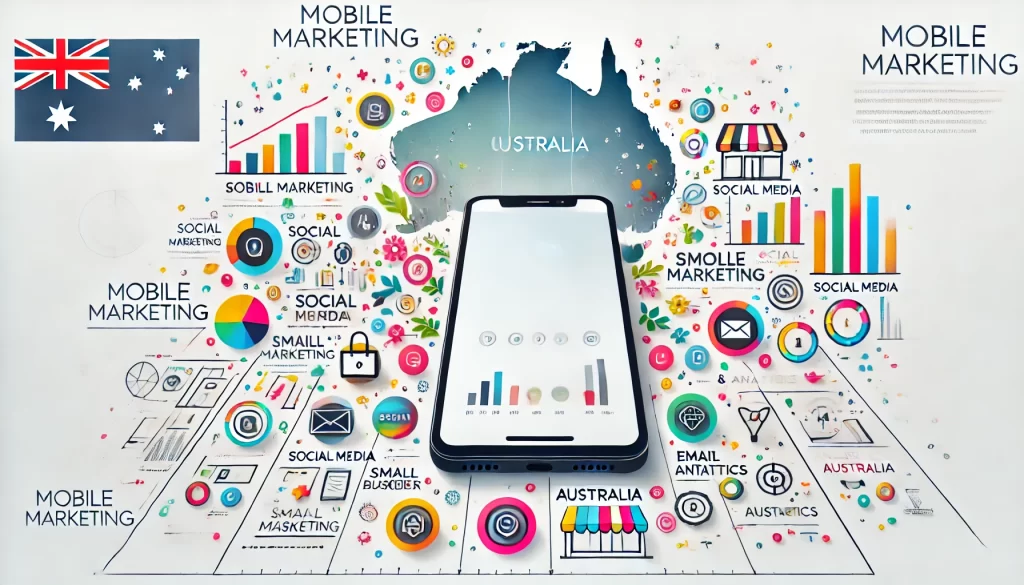Practical Tips For Small and Medium Enterprises To Drive Growth Online
In fast-paced digital marketing, small and medium enterprises in Australia are continually looking for ways to compete effectively and grow their online presence. Selecting the right digital marketing strategies is more important than ever to assist businesses in connecting with their target audience, increasing visibility and ultimately driving revenue.
In this post, we’ll explore ten of the most effective digital marketing strategies that can help SMEs in Australia accelerate their growth online.
1. Search Engine Optimisation (SEO)
SEO remains the backbone of any successful digital marketing campaign. By optimizing your website for search engines, you can attract high-intent users actively searching for the solutions you offer.
For Australian SMEs, local SEO is particularly crucial. Leveraging tools like Google My Business and ensuring your site is optimised for local search terms can help you capture customers in your region. An SEO audit is a good first step—focus on improving your website’s structure, speed, and mobile usability.
2. AI Automation & Workflows
AI-powered tools are essential for streamlining repetitive tasks, from email marketing and lead nurturing to customer service and sales follow-ups.
The real beauty of AI automation lies in its ability to provide personalised customer experiences at scale. By leveraging machine learning, these tools can segment audiences, tailor content, and trigger workflows based on user behaviour—leading to higher engagement and conversion rates. It’s true that automation offers incredible efficiency however it is essential they are set up correctly as poorly designed automations can come off as impersonal or even annoying to potential customers.
Practical Tip: Use AI-powered A/B testing to optimise your marketing campaigns.
3. Content Marketing
Content is still king, and quality content builds trust, drives traffic, and positions your SME as an authority in your field. The key for Australian SMEs is creating hyper-relevant, audience-specific content. From blog posts to whitepapers, focus on answering your customers’ most pressing questions.
4. Social Media Marketing
On average, Australians spend 1 hour and 57 minutes a day on social media. Platforms like Facebook, Instagram, and LinkedIn are essential as it allow you to directly engage your audience, drive brand awareness, and showcase your business personality.
Practical Tip: Don’t spread yourself too thin across all platforms. Focus on 2-3 social networks where your target audience is most active, and consistently post valuable content that engages them.
5. Email Marketing
A ccording to the Data & Marketing Association (DMA), email marketing is one of the highest ROI channels, delivering an average of $42 for every $1 spent. For experienced Australian SMEs, building a segmented email list can be a goldmine for nurturing relationships and driving repeat business.
Practical Tip: Use email marketing tools to automate and personalize your email sequences. Be sure to monitor open and click-through rates.
6. Influencer Marketing
SMEs can benefit from partnering with micro-influencers (those with 10,000-50,000 followers) who have an engaged local following. This strategy is especially effective for businesses in sectors like fashion, food, or lifestyle, where product recommendations are highly influential.
Practical Tip: Focus on influencers whose values align with your brand. A smaller, highly engaged audience is more valuable than a large following with low engagement.
7. Video Marketing
Video content continues to dominate. In fact, 79% of people report that watching a video has convinced them to buy a product or service. Whether it’s live streams, product demos, or customer testimonials, video allows Australian SMEs to connect on a personal level.
Practical Tip: Use short-form videos (under 60 seconds) on platforms like TikTok and Instagram Reels to boost engagement and reach new audiences.
8. Conversion Rate Optimization (CRO)
Bringing traffic to your website is one thing—converting that traffic into leads and customers is another. CRO is about improving the user experience on your site to encourage conversions, whether that’s making a purchase, filling out a form, or signing up for a newsletter.
Practical Tip: Implement A/B testing tools like Optimizely can be used to test different headlines, CTAs, and landing page designs.
9. Build a Solid Referral Program
Word-of-mouth is still one of the most effective marketing tools for SMEs. In the digital space, a referral program can amplify this effect by incentivising customers to promote your business.
Practical Tip: Make sure that your commission structure is competitive to attract quality partners.
10. Analytics and Data-Driven Marketing
The most successful digital marketing strategies are built on data. Analytics tools like Google Analytics, Microsoft Clarity or Hotjar provide valuable insights into how users interact with your website, what content performs best, and where you’re losing potential customers.
Practical Tip: Set up conversion tracking on Google Ads and social platforms to ensure you’re accurately measuring the ROI of your marketing efforts.
Conclusion: A Strategy for Success
For Australian SMEs, a well-rounded digital marketing strategy is essential in order to thrive in today’s competitive market. Whether you’re just trying PPC or building a content marketing strategy, the above strategies offer both immediate and long-term growth potential. By consistently analysing your efforts and staying agile, your business can thrive in the ever-changing digital landscape.
If you require professional help from a team of experienced digital marketers, be sure to reach out to us!









